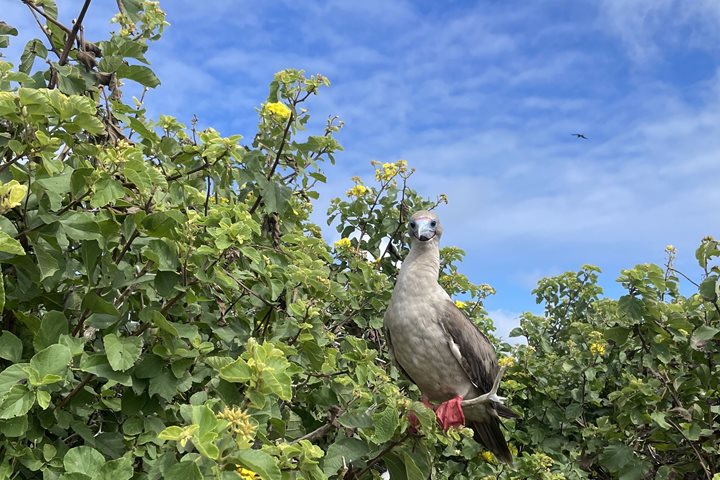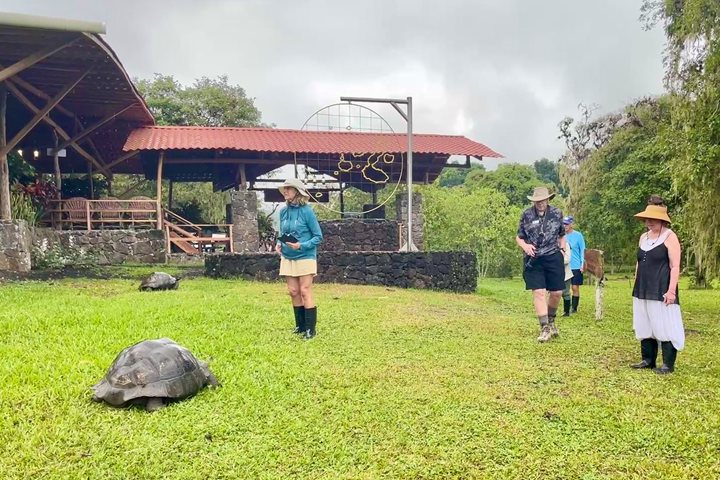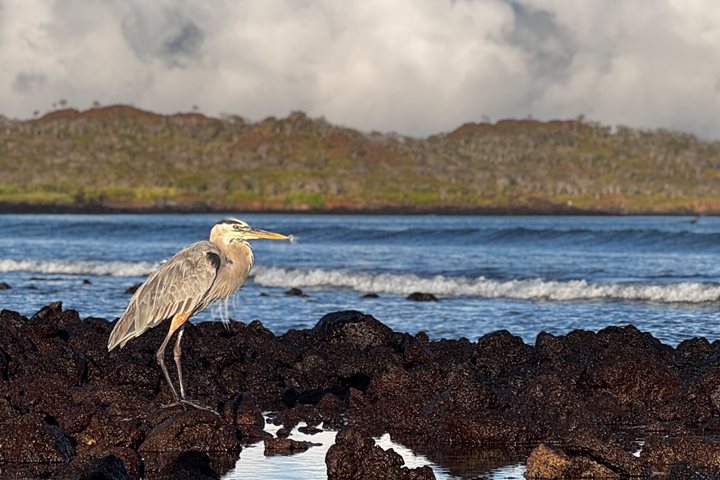We started our day with a beautiful sunrise and a stretching session with our wellness specialist, followed by a very nutritious breakfast prepared by our wonderful team of cooks. Today was an exciting day as we went to visit a very different ecosystem that our guests had not seen or experienced before. We explored the humid highlands in Santa Cruz Island, the most central island in the archipelago and the island with the largest human population. After disembarkation, our Zodiacs took us to the Itabaca Channel, a very narrow and shallow area that divides Santa Cruz from Baltra Island. Several buses were waiting for us so we could start our morning adventure. The ride was not long, only about 40 minutes, and it flew by as we enjoyed the scenery of the diverse vegetation zones of the island. After arriving at the ranch and putting on our rubber boots, we were ready to find those giants, the Galapagos giant tortoises. The naturalists shared their ample knowledge about these ancient and iconic animals. Then we enjoyed a delicious lunch prepared by our cooks and the Manzanillo Ranch team. After a relaxing time, we boarded buses to return to our wonderful floating hotel. We enjoyed a naturalist’s presentation on the oceanography of the Galapagos Islands. Our day was not over yet; it was now time to explore the pristine white sandy beach of Bachas, located in the north of Santa Cruz. Our guests enjoyed the soft sand, warm sun, and lots of wildlife sightings, including some Galapagos flamingos. After relaxing and bathing in the sea, we came back to National Geographic Endeavour II and listened to our recap session and a briefing for the next day’s activities. What a day!
5/29/2025
Read
National Geographic Gemini
Genovesa Island
Genovesa is considered one of the Galapagos crown jewels, and today it was showing off all of its splendor. Immediately after breakfast we put on our sturdy shoes and set out to explore Prince Philip’s Steps. This area is known for opportunities to observe not only large colonies of nesting Nazca and red-footed boobies, but maybe, just maybe, the short-eared owl which exhibits diurnal behavior on this island. After this walk we got ready for a dip in the Pacific Ocean and snorkeling along the inner coast of this caldera. The afternoon was equally amazing as we disembarked to explore Darwin Bay, along a short and easy trail that was packed with wildlife. Here we observed not only nesting frigatebirds, red-footed boobies, and Nazca boobies, but also a few yellow-crowned night herons. It was another incredible afternoon in the Galapagos Islands.







